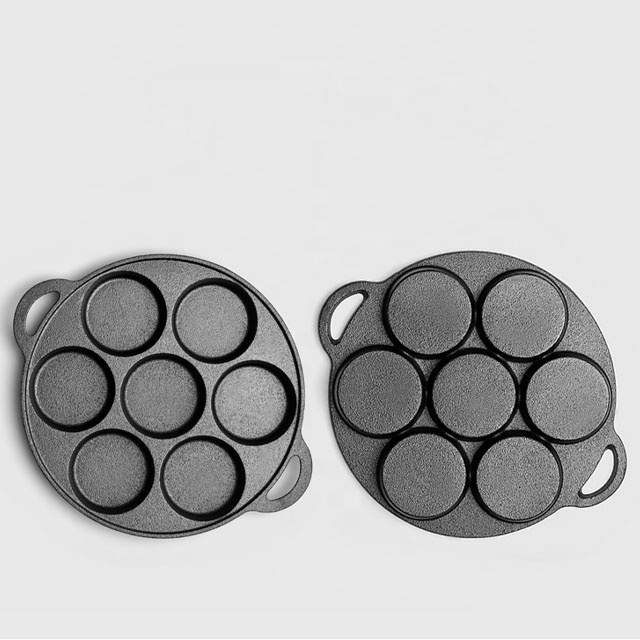
Exploring the Versatility of Skillet Cooking for Delicious Home Meals
The Versatility and Charm of Skillet Cooking
Skillet cooking has long been a cherished method in kitchens across the globe. Whether you are a novice cook or a seasoned chef, a skillet is an indispensable tool that brings both utility and flair to your culinary endeavors. From sizzling breakfasts to simmering stews, a skillet can handle an impressive range of dishes with grace and efficiency.
The Basics of Skillet Cooking
At its core, a skillet is a flat-bottomed pan with relatively low sides and a long handle, designed for direct heat cooking. Commonly made from materials like cast iron, stainless steel, or non-stick surfaces, skillets are known for their even heat distribution and versatility. Cast iron skillets, in particular, are celebrated for their heat retention and the unique flavor they can impart to food.
When it comes to cooking techniques, skillets excel in methods such as frying, sautéing, searing, and even baking. This versatility makes them an excellent choice for many recipes. For instance, you can start by searing a steak to perfection, and then finish it in the oven—all in the same skillet. This not only saves time but also minimizes cleanup, making it ideal for busy weeknights.
Benefits of Using a Skillet
One of the standout benefits of skillet cooking is its ability to develop complex flavors. The process of browning ingredients at high heat creates Maillard reactions, which enhance the taste and aroma of your dishes. Skillets are perfect for creating caramelized vegetables, crispy chicken, or the classic French dish ratatouille, where individual components meld into a delightful medley.
Moreover, skillets encourage a level of creativity in the kitchen. With a variety of ingredients on hand—vegetables, meats, grains, or even fruits—a skilled home cook can throw together a delicious meal with whatever is available. The ability to quickly adapt recipes, substituting ingredients as needed, is part of what makes skillet cooking an approachable and exciting form of culinary expression.
skillet cooking pan

Healthier Cooking Options
Another advantage of using a skillet is the potential for healthier cooking. Unlike some cooking methods that require excessive amounts of oil or butter, skillets allow for precise control over how much fat is used. Non-stick skillets also enable cooking with less oil, making it easier to prepare lower-calorie meals without sacrificing flavor.
Additionally, one-pan meals are a hallmark of skillet cooking. By combining protein, vegetables, and grains in one pan, you can create balanced meals that are not only nutritious but also easy to portion and serve. Think of a hearty chicken and vegetable stir-fry or a comforting pasta dish—all prepared in the same skillet.
Cleaning and Maintenance
Caring for a skillet can vary depending on the material. Cast iron skillets, while incredibly durable, require specific maintenance to keep them in top shape. Regular seasoning helps maintain the non-stick surface and prevents rusting. Conversely, non-stick skillets are much easier to clean, but care must be taken to avoid using metal utensils that can scratch the coating.
Conclusion
Skillet cooking is more than just a culinary technique; it is a celebration of flavors, creativity, and convenience. From breakfast to dinner, a skillet opens up a world of possibilities in your kitchen. Whether you’re making a quick weeknight meal or an elaborate brunch for friends, the trusty skillet is there to help you create memorable dishes that will delight your taste buds. Embracing the art of skillet cooking can transform your approach to preparing food, making it not only easier but also more enjoyable. So grab your skillet, and let the cooking adventure begin!
-
Black Cast Iron Pan- ZD Cookware|Non-Stick, Heat ResistantNewsAug.03,2025
-
Cast Iron Cookware Pancake Pan- ZD Cookware|Non-Stick, Even Heat, DurableNewsAug.02,2025
-
Cast Iron Cookware- Baixiang County Zhongda Machinery|Non-Stick, Heat RetentionNewsAug.02,2025
-
High Quality Kitchen Durable Black Round Cast Iron Cookware Pancake Crepe Pan With Wooden Handle|Non-Stick Surface&Heat RetentionNewsAug.02,2025
-
Authentic Traditional Chinese Wok for High-Performance CookingNewsAug.02,2025
-
Season Cast Iron Perfectly with GPT-4 Turbo TipsNewsAug.01,2025


